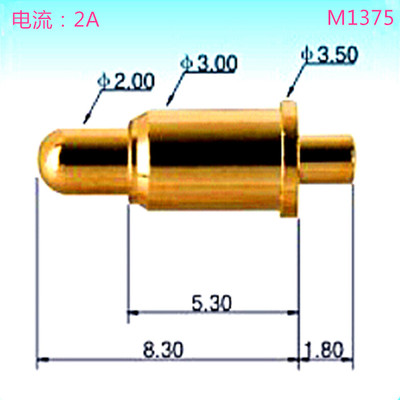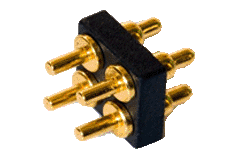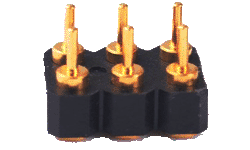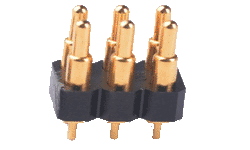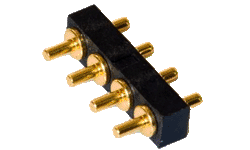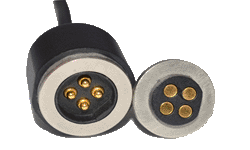2025-3-2 10:35:50
Pogo pins, as precision connector components, are widely used in testing, charging, and data transmission of electronic devices. Fixing pogo pins on a PCB board is a critical step to ensure their stability and reliability. From soldering methods to mechanical fixation, from design optimization to process control, there are various ways to secure
pogo pin. This article provides a detailed analysis of how to fix pogo pins on a PCB board and introduces various fixation methods along with their pros and cons.
1. Soldering Fixation Methods
Surface Mount Technology (SMT) is one of the common methods for fixing pogo pins. Using reflow soldering, pogo pins are soldered onto the surface of the PCB board. In a smart device testing scenario, SMT technology was used to fix pogo pins, significantly improving production efficiency.
Through-Hole Technology (THT) is another common soldering method. Pogo pins are inserted into the through-holes of the PCB board and fixed using wave soldering or manual soldering. In a high-precision testing device, THT technology was used to fix pogo pins, enhancing connection reliability.
Selective Soldering Technology is a high-precision soldering method. Using selective soldering equipment, pogo pins are locally soldered to avoid thermal impact on other components. In an automated production line, selective soldering technology was used to fix pogo pins, improving soldering quality.
2. Mechanical Fixation Methods
Screw Fixation is a simple and reliable mechanical fixation method. By designing screw holes on the PCB board, screws are used to fix pogo pins. In an industrial control system, screw fixation was used to secure pogo pins, improving connection stability.
Snap Fixation is another common mechanical fixation method. By designing snap structures on the PCB board, pogo pins are tightly secured. In a portable device, snap fixation was used to simplify the installation process.
Adhesive Fixation is a flexible mechanical fixation method. High-strength conductive or structural adhesives are used to bond pogo pins to the PCB board. In a high-precision testing device, adhesive fixation was used to enhance connection reliability.
3. Design Optimization and Process Control
PCB Board Design Optimization is key to fixing pogo pins. By reasonably designing the PCB board's pads, through-holes, and fixation structures, the fixation effect is improved. In a smart device testing scenario, optimizing PCB board design significantly enhanced the fixation of pogo pins.
Soldering Process Control is an important aspect of ensuring fixation quality. By precisely controlling soldering temperature, time, and pressure, soldering quality is improved. In an automated production line, optimizing the soldering process enhanced the fixation quality of pogo pins.
Mechanical Fixation Process Control is another critical factor. By precisely controlling screw torque, snap force, and adhesive application, the fixation effect is improved. In an industrial control system, optimizing mechanical fixation processes enhanced the fixation of pogo pins.
4. Hybrid Fixation Methods
Combination of Soldering and Mechanical Fixation is an efficient fixation method. The dual assurance of soldering and mechanical fixation improves the fixation effect of pogo pins. In a high-precision testing device, the combination of soldering and mechanical fixation significantly enhanced connection reliability.
Combination of Soldering and Adhesive Fixation is another common hybrid fixation method. The dual assurance of soldering and adhesive fixation improves the fixation effect of pogo pins. In a portable device, the combination of soldering and adhesive fixation simplified the installation process.
Combination of Mechanical and Adhesive Fixation is a flexible fixation method. The dual assurance of mechanical and adhesive fixation improves the fixation effect of pogo pins. In an industrial control system, the combination of mechanical and adhesive fixation enhanced connection stability.
5. Future Development Trends
Intelligent Fixation Technology is the future direction. By integrating sensors and intelligent algorithms, the fixation status of pogo pins can be monitored in real time, enabling early warnings and solutions. In a smart device testing scenario, intelligent fixation technology significantly improved fixation effectiveness.
Miniaturized Fixation Technology is another important trend. As electronic devices move toward smaller and more portable designs, pogo pin fixation technology is also evolving toward smaller sizes and higher precision. In a portable device, miniaturized fixation technology simplified the installation process.
Multifunctional Integrated Fixation Technology is the future direction for pogo pins. By integrating multiple fixation methods, the fixation effect and reliability of pogo pins are improved. In a high-precision testing device, multifunctional integrated fixation technology significantly enhanced connection reliability.
There are various methods to fix pogo pins on a PCB board, involving soldering fixation, mechanical fixation, design optimization, and process control. Through systematic optimization and strategy implementation, not only can the fixation effect of pogo pins be improved, but system stability and reliability can also be enhanced. With continuous technological advancements, pogo pin fixation technology will continue to be optimized, providing stronger connectivity for electronic devices. In the future, the deep integration of pogo pins with new materials and processes will open a new chapter in connectivity technology.
